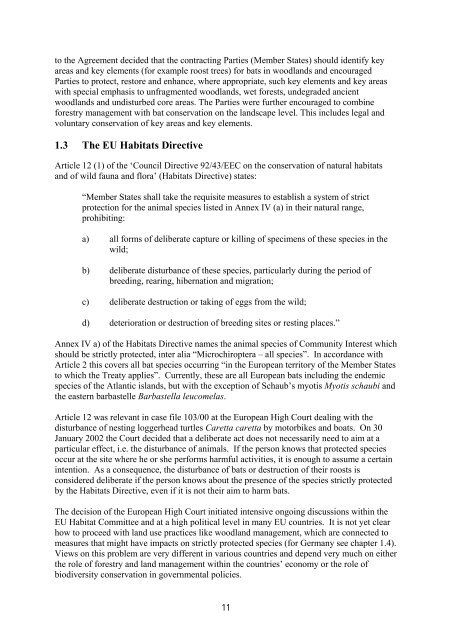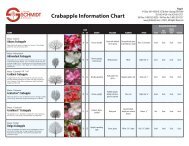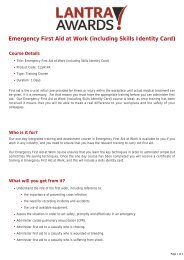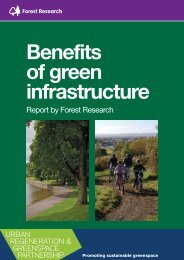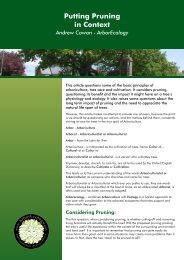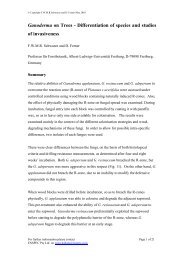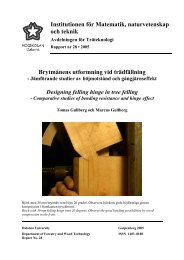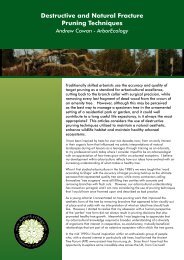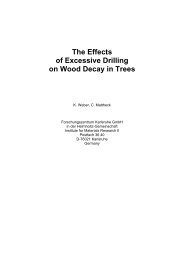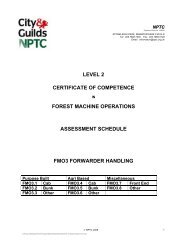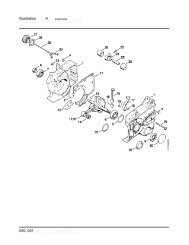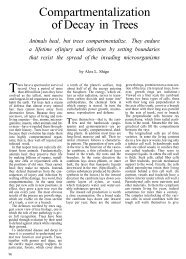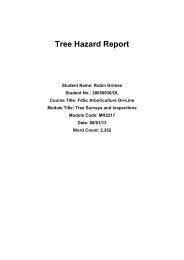working today for nature tomorrow - Justus-Liebig-Universität GieÃen
working today for nature tomorrow - Justus-Liebig-Universität GieÃen
working today for nature tomorrow - Justus-Liebig-Universität GieÃen
- No tags were found...
You also want an ePaper? Increase the reach of your titles
YUMPU automatically turns print PDFs into web optimized ePapers that Google loves.
to the Agreement decided that the contracting Parties (Member States) should identify keyareas and key elements (<strong>for</strong> example roost trees) <strong>for</strong> bats in woodlands and encouragedParties to protect, restore and enhance, where appropriate, such key elements and key areaswith special emphasis to unfragmented woodlands, wet <strong>for</strong>ests, undegraded ancientwoodlands and undisturbed core areas. The Parties were further encouraged to combine<strong>for</strong>estry management with bat conservation on the landscape level. This includes legal andvoluntary conservation of key areas and key elements.1.3 The EU Habitats DirectiveArticle 12 (1) of the ‘Council Directive 92/43/EEC on the conservation of natural habitatsand of wild fauna and flora’ (Habitats Directive) states:“Member States shall take the requisite measures to establish a system of strictprotection <strong>for</strong> the animal species listed in Annex IV (a) in their natural range,prohibiting:a) all <strong>for</strong>ms of deliberate capture or killing of specimens of these species in thewild;b) deliberate disturbance of these species, particularly during the period ofbreeding, rearing, hibernation and migration;c) deliberate destruction or taking of eggs from the wild;d) deterioration or destruction of breeding sites or resting places.”Annex IV a) of the Habitats Directive names the animal species of Community Interest whichshould be strictly protected, inter alia “Microchiroptera – all species”. In accordance withArticle 2 this covers all bat species occurring “in the European territory of the Member Statesto which the Treaty applies”. Currently, these are all European bats including the endemicspecies of the Atlantic islands, but with the exception of Schaub’s myotis Myotis schaubi andthe eastern barbastelle Barbastella leucomelas.Article 12 was relevant in case file 103/00 at the European High Court dealing with thedisturbance of nesting loggerhead turtles Caretta caretta by motorbikes and boats. On 30January 2002 the Court decided that a deliberate act does not necessarily need to aim at aparticular effect, i.e. the disturbance of animals. If the person knows that protected speciesoccur at the site where he or she per<strong>for</strong>ms harmful activities, it is enough to assume a certainintention. As a consequence, the disturbance of bats or destruction of their roosts isconsidered deliberate if the person knows about the presence of the species strictly protectedby the Habitats Directive, even if it is not their aim to harm bats.The decision of the European High Court initiated intensive ongoing discussions within theEU Habitat Committee and at a high political level in many EU countries. It is not yet clearhow to proceed with land use practices like woodland management, which are connected tomeasures that might have impacts on strictly protected species (<strong>for</strong> Germany see chapter 1.4).Views on this problem are very different in various countries and depend very much on eitherthe role of <strong>for</strong>estry and land management within the countries’ economy or the role ofbiodiversity conservation in governmental policies.11


